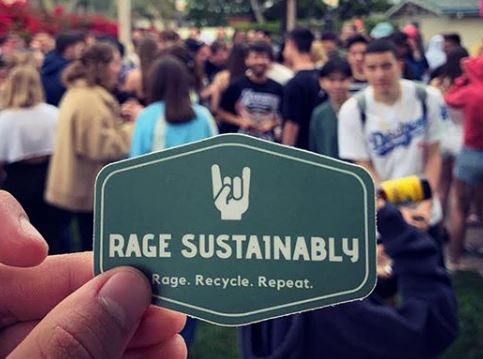Sustainability March 24, 2020
Bringing new meaning to the "Green Screen"


The media is in an interesting place. It is shifting increasingly to social, on-demand entertainment. However, it’s also seen as fighting with politicians. Despite being challenged in a way never seen before, sustainability in the media is necessary to educate its audiences on the world around them.
Over the years, media networks decided to do more than create entertaining stories. Storytelling can engage audiences and make them active globally. According to Frances Buckingham, associate editor for UK-based think tank SustainAbility, in order to, “aid the transition towards more sustainable livelihoods, it is the media sector.” For a long time industries have been focused on making money. However, business schools see it goes deeper than that. Now, it’s about People, Planet, and Profit.
Film and TV companies are increasingly aware of the importance sustainability has. With environmental, social, and goverence reporting becoming the norm, society is very concerned about the impact human action has on the environment . Everyone in entertainment has a duty to show others how to best engage with the world around us
Today’s powerhouses such as Warner Brothers and NBCUniversal have heard the call. They created WBgood and Green is Universal, bringing social justice issues to our TVs regularly. This has grown on social media as well. As Millennials will be the largest working group in the next 10 years, social media has become the place where we get daily news and information.

Due to the high engagement social media receives hourly around the world, we have seen outlets realize they need to be more socially aware. An ideal example is the UK-based, digital media platform Green TV and the Environmental Media Association in California.
We’ve seen traditional media catch up significantly. The Walt Disney Company is a perfect example to lead the industry. Consistently ranking high on corporate responsibility metrics, they have taken social innovation to another level. Efforts in responsible programming , such as Disney Nature, have led to them being awarded annually in sustainability leadership.
Other countries have used the impact of the Internet to develop their own platforms, such as sustainability television, inc. in British Columbia, Canada. Aside from programming, the production process itself has gotten a makeover. In the UK, chief operating officer of BAFTA Kevin Price has been making strides to have TV productions reduce their carbon footprint.
Here in the U.S., more entertainment systems are receiving the EPA’s energy star rating before being sold on the market. Televisions are growing in size and their energy efficiency is too. Even the news outlet CNBC has joined the conversation with their sustainable energy special report. This is great news for you more politically-geared folks!


In summary, we receive and give information in the world today in many ways. From podcast-listening to Internet TV, media is everywhere we go. We use it as an escape and to feed our imagination.
Through imagination, we promote healthy, long-term behavior changes. If there is any business with the moral obligation to do this, it’s entertainment. What power!